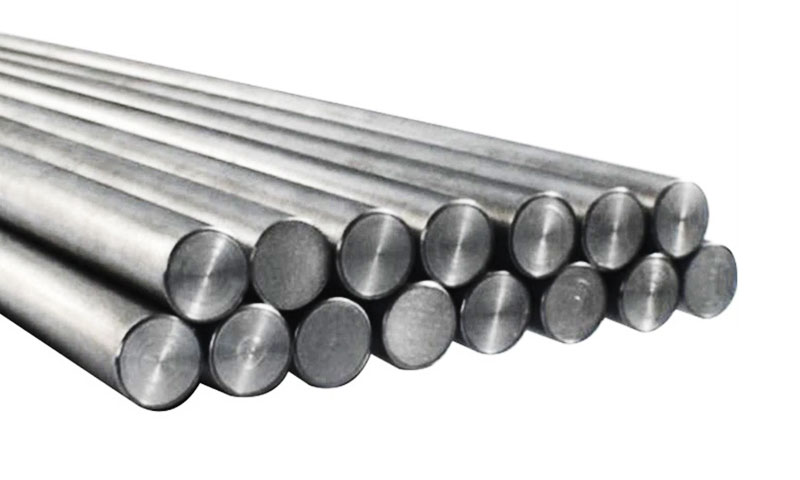1. Indledning
OS S20910 (commonly marketed as Nitronic 50 eller XM-19) and UNS S21800 (commonly marketed as Nitronic 60 eller Legering 218) are advanced austenitic Rustfrit stål engineered for demanding service.
Both deliver better performance than conventional 300-series grades, but they are optimized for different priorities:
- S20910 (Nitronic 50) er en Korrosionsbestandig, nitrogen-strengthened austenitic stainless optimized for high corrosion resistance (including sour service), God styrke, Fremragende sejhed (including cryogenic), og god svejsbarhed.
It is often specified where resistance to pitting, SCC and low-temperature toughness are required together with reasonable strength. - S21800 (Nitronic 60) is formulated primarily for wear and galling resistance while retaining corrosion resistance typical of austenitics.
It contains high silicon and manganese for tribological performance and is selected where sliding contact, Galling, and high wear are the dominant failure modes.
This article compares composition, mechanical and corrosion behaviour, Fremstilling, and real-world application trade-offs so you can select the right alloy for a specific component or environment.
2. What Is UNS S20910 (Nitronic 50)
OS S20910, almindeligt kendt som Nitronic 50 eller XM-19, er en high-performance nitrogen-strengthened austenitic stainless steel.
It is engineered to deliver a combination of Fremragende korrosionsbestandighed, høj styrke, Duktilitet, og sejhed, including at cryogenic temperatures.
These attributes make it well-suited for demanding industrial applications such as chemical processing, marine miljøer, and sour-service conditions.
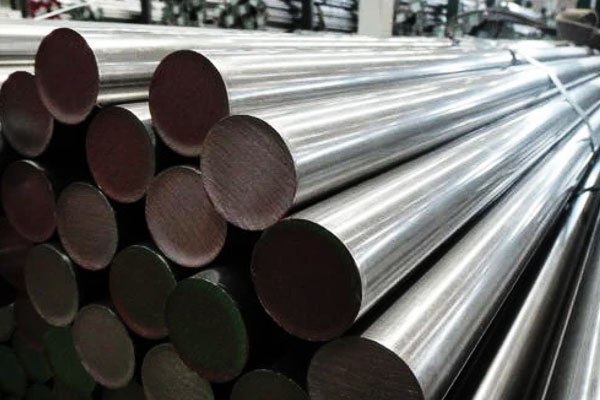
Key material designations and specifications omfatte:
- ASTM A276 / A479 (as XM-19)
- UNS S20910
- FRA 1.3964
Primary characteristics of UNS S20910 (Nitronic 50):
- Korrosionsmodstand: Enhanced by increased chromium, Molybdæn, og nitrogenindhold; highly resistant to pitting and crevice corrosion in chloride environments.
- Mekanisk styrke: Stronger than conventional 300-series stainless steels, with excellent yield and tensile properties.
- Ductility and toughness: Maintains performance at both elevated and cryogenic temperatures.
- Fabrication and weldability: Can be machined, dannet, and welded with conventional techniques; solution annealing restores ductility after cold working.
- Nitrogen-strengthened: Nitrogen addition increases yield strength and contributes to pitting resistance without compromising austenitic ductility.
- Application suitability: Listed in NACE MR0175 for sour service, suitable for marine hardware, Kemisk procesudstyr, trykkomponenter, and structural applications requiring corrosion resistance and mechanical performance.
3. What Is UNS S21800 (Nitronic 60)
OS S21800, ofte benævnt som Nitronic 60 eller Legering 218, er en high-performance austenitic stainless steel designed primarily for wear and galling resistance, while maintaining good corrosion performance typical of austenitics.
Its specialized composition makes it ideal for applications where sliding contact, Klæbemiddel, and high surface stress are primary concerns.
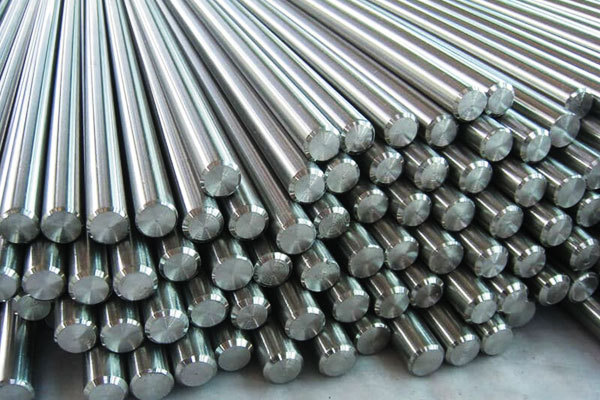
Key material designations and specifications include:
- ASTM A276 / A479 (for bars, stænger, and other wrought forms)
- UNS S21800
Primary characteristics of UNS S21800 (Nitronic 60):
- Wear and galling resistance: Elevated manganese and silicon content, combined with a nitrogen-strengthened austenitic matrix, provides superior resistance to Galling, Klæbemiddel, and surface seizure.
- Korrosionsmodstand: While not as corrosion-resistant as Nitronic 50 in highly aggressive chloride environments, det tilbyder God generel korrosionsbestandighed suitable for moderate chemical and marine exposures.
- Mekanisk styrke: Exhibits high strength in both annealed and cold-worked conditions, with excellent surface hardness after work hardening.
- Fabrication and welding: Can be welded and fabricated using standard methods, though its higher silicon and manganese content may require adjustments in welding filler selection and machining parameters.
- Application suitability: Ofte brugt til Ventil stængler, Fastgørelsesmidler, Pumpeaksler, bearing surfaces, and other components subjected to repeated sliding contact or wear-intensive service.
4. Typical Chemical Compositions and Alloying Differences
A critical factor distinguishing UNS S20910 (Nitronic 50) and UNS S21800 (Nitronic 60) is their alloying strategy, which directly influences corrosion resistance, Mekanisk styrke, wear behavior, and fabrication characteristics.
While both are nitrogen-strengthened austenitic stainless steels, they are optimized for different service priorities.
Representative Chemical Compositions (WT%) and Performance Role
| Element | UNS S20910 (Nitronic 50) | UNS S21800 (Nitronic 60) | Key Role in Performance |
| Kulstof (C) | ≤ 0.06 | ≤ 0.10 | Controls strength, limits carbide formation; low C improves corrosion resistance and weldability |
| Krom (Cr) | 20–23 | 16–18 | Primary contributor to corrosion resistance; higher Cr in S20910 increases PREN |
| Nikkel (I) | 11–14 | 8–9 | Austenitstabilisator; Forbedrer sejhed og duktilitet; higher Ni in S20910 supports cryogenic performance |
| Mangan (Mn) | 5–6 | 8–9 | Increases work-hardening and galling resistance; high Mn in S21800 aids wear performance |
| Silicium (Og) | ≤ 0.5 | 3.5–4,5 | Improves oxidation and wear resistance; higher Si in S21800 supports galling resistance |
| Molybdæn (Mo) | 1.5–3 | Ikke specificeret / Spor | Forbedrer pitting og spalte korrosionsbestandighed; present in S20910 to resist chlorides |
| Nitrogen (N) | 0.10–0,20 | 0.08–0.18 | Strengthens austenitic matrix; Forbedrer korrosionsbestandighed; supports wear resistance in S21800 |
| Jern (Fe) | Balance | Balance | Matrixelement; balances alloying; provides basic austenitic structure |
Interpretation: S20910 emphasizes Cr + I + Mo + N (classic austenitic corrosion alloying with nitrogen strengthening and Mo for pitting resistance).
S21800 trades some chromium and nickel for elevated silicon and manganese, which improve hardness, wear and galling resistance.
4. Mechanical Properties and Temperature Behaviour
OS S20910 (Nitronic 50) and UNS S21800 (Nitronic 60) exhibit distinct mechanical profiles reflecting their alloying strategies.
Nøgle mekaniske egenskaber
| Ejendom | UNS S20910 (Nitronic 50) | UNS S21800 (Nitronic 60) | Practical Implication |
| 0.2% Udbyttestyrke (MPA) | 350–420 | 320–380 | S20910 offers higher baseline strength for corrosion-critical applications; S21800 gains strength via work hardening |
| Trækstyrke (MPA) | 650–750 | 600–700 | S20910 provides slightly higher ultimate strength; S21800 maintains adequate tensile strength with wear focus |
| Forlængelse (%) | 30–45 | 25–40 | S20910 maintains excellent ductility; S21800 is slightly less ductile but sufficient for forming/fabrication |
| Hårdhed (HRB / HRC) | HRB ~85 typical annealed | HRB ~85, can be higher with work hardening | S21800’s higher Mn/Si allows superior surface hardness after cold work, enhancing galling resistance |
| Påvirkning af sejhed (J at room temp) | Fremragende; retains toughness at cryogenic temps (-196° C.) | God; slightly lower than S20910 in cryogenic applications | S20910 preferred in low-temperature or highly dynamic loading applications |
| Elevated Temperature Performance | Good up to ~600–700°C | Reasonable; high Si improves oxidation resistance at moderate temperatures | S20910 favored for high-temperature corrosion exposure; S21800 for wear-exposed high-temperature components |
Temperature Behaviour
- Cryogenic Performance:
S20910 retains ~90% of impact energy at liquid helium temperatures, making it suitable for LNG storage, cryogenic piping, og rumfartsapplikationer.
S21800 retains reasonable toughness but is not optimized for extreme low temperatures. - Forhøjet temperatur ydeevne:
Both alloys maintain dimensional stability and strength at moderate elevated temperatures.
Nitronic 50’s Mo content provides additional resistance to high-temperature corrosion, while Nitronic 60’s high Si content improves oxidation resistance in sliding-contact applications. - Arbejdshærdning:
Both alloys are austenitic and work-hardening, meaning mechanical properties, especially hardness and yield strength, can be increased via cold working.
S21800 benefits most due to high Mn and Si, improving wear and galling performance.
5. Corrosion Resistance and Pitting Resistance (Træ)
Pitting modstandsækvivalent nummer (Træ) is a useful indicator of resistance to chloride pitting; it’s calculated from Cr, Mo and N content (simplified form: PREN ≈ Cr + 3.3× Mo. + 16× n).
- Nitronic 50 (S20910) — higher Cr, Mo and N yield PREN values in the low-to-mid 30s (typical engineering figure ≈ ~34).
That places it well above 316L (PREN ≈ 20–25) and makes it suitable for many chloride-bearing environments, including some marine and sour service (it is commonly accepted for NACE MR0175 qualifying in many conditions—verify certificate). - Nitronic 60 (S21800) — because Mo is typically absent and Cr is lower, PREN is sænke (typical mid-20s or less depending on exact chemistry).
While S21800 resists general corrosion reasonably well, Det er det ikke chosen primarily for pitting resistance; i stedet, it is used where galling and wear are primary concerns.
6. Slid, galling and tribological performance
- Nitronic 60 (S21800) er konstrueret til galling resistance and sliding wear.
High silicon and manganese, combined with work-hardening capacity, produce a surface that resists adhesive wear and metal-to-metal seizure.
Typical uses include valve stems, sæder, Fastgørelsesmidler, and pump components where repeated sliding contact occurs. - Nitronic 50 (S20910) Tilbud god slidstyrke, but its primary strengths are corrosion resistance and toughness rather than optimized galling resistance.
It is sometimes used in wear applications where corrosion control is also required, but for extreme galling environments S21800 usually outperforms it.
7. Fremstilling, welding and heat-treatment considerations
Svejsbarhed
- Both alloys are Svejsbar by standard processes (TIG, MIG, SMAW).
- S20910 (higher Ni/N) is highly weldable and retains corrosion resistance after welding when proper procedures and filler metals are used.
Low carbon and stabilized practices can minimize sensitization risk. - S21800 requires attention to heat input and filler selection because its high Si and Mn can influence weld metal composition; preheat/post-weld heat treatment practices depend on component size and code requirements.
Forming and machining
- Both are Arbejdshærdning austenitics; S21800’s higher Si/Mn can make cutting more challenging—tooling and speeds need adjustment.
S20910 in solution-annealed condition is generally easier to machine/form.
Varmebehandling
- These are austentic alloys—strength is primarily from cold working and alloying; full hardening by quench/tempering is not applicable.
Solution annealing can restore ductility and corrosion resistance (typical anneal ~1000–1100 °C followed by rapid cooling).
Hydrogen/sour service
- S20910’s chemistry and listing in some sour-service guidance make it suitable for H₂S environments (verify NACE/ISO certifications).
For sour service weld procedures and hardness limits (HRC thresholds) are normally enforced.
8. Applications of UNS S20910 vs UNS S21800 Austenitic Stainless Steel
The distinct alloying strategies, Mekaniske egenskaber, and corrosion/wear characteristics of UNS S20910 (Nitronic 50) og UNS S21800 (Nitronic 60) define their suitability across different industrial applications.
Applications of UNS S20910 (Nitronic 50)
UNS S20910 is engineered for Høj korrosionsmodstand, Fremragende sejhed, og god svejsbarhed, making it ideal for environments where both corrosion and mechanical performance er kritiske.
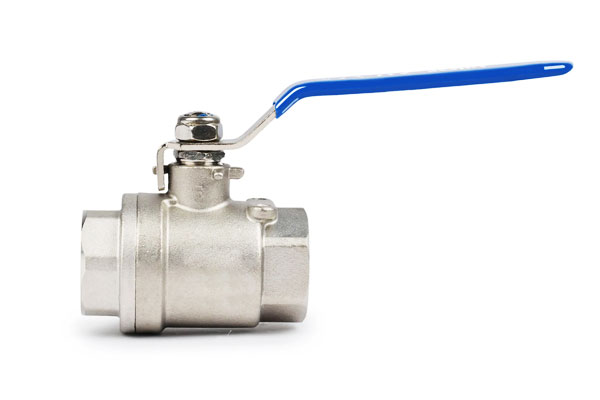
| Industri / Sektor | Typiske applikationer | Key Performance Requirement |
| Marine & Offshore | Seawater fittings, Pumpeaksler, Fastgørelsesmidler, ventiler | Høj chloridresistens, prevention of pitting/crevice corrosion |
| Kemisk & Procesudstyr | Varmevekslere, reaktorer, rør, Tanke | Resistance to acids, chlorider, and sour service (H₂S -eksponering) |
| Kryogene anvendelser | LNG storage and transfer piping, cryogenic valves | Retains toughness at extremely low temperatures (-196° C.) |
| Rumfart | Fuel lines, cryogenic components | Høj styrke, Korrosionsmodstand, low-temperature ductility |
| Energi & Magt | Boiler components, turbine parts in corrosive environments | Combination of corrosion resistance and mechanical integrity |
Applications of UNS S21800 (Nitronic 60)
UNS S21800 is optimized for galling and wear resistance while maintaining reasonable corrosion performance.
It is ideal for mechanical components subjected to sliding, adhesive contact, or high surface stress.
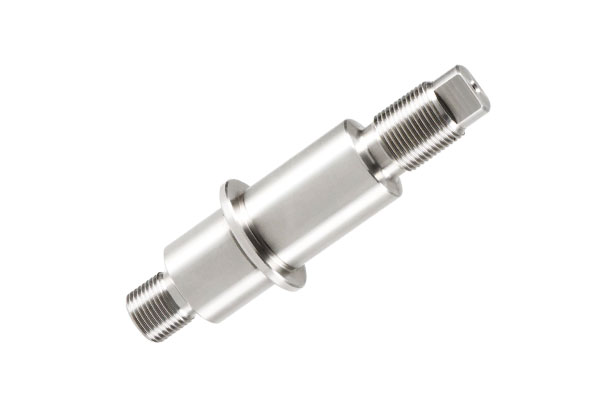
| Industri / Sektor | Typiske applikationer | Key Performance Requirement |
| Ventil & Pump Industry | Ventil stængler, sæder, Pumpeaksler, Fastgørelsesmidler | High resistance to galling, glidning af slid, adhesive seizure |
| Industrielle maskiner | Lejer, bøsninger, high-wear mating surfaces | Overfladehårdhed, work-hardening capability, lav friktion |
| Automotive & Tungt udstyr | Fastgørelsesmidler, high-wear components, aktuatorer | Galling prevention, durability under repeated sliding or contact |
| Marine applikationer | Deck hardware, mechanical joints | Moderate corrosion resistance with high wear/galling protection |
| Kemisk behandling | Mixer shafts, agitator blades | Wear-resistant components where moderate corrosion occurs |
Application Guidance
- Choose UNS S20910 when the primary concern is corrosion resistance in aggressive or sour environments, especially when toughness, svejsbarhed, and low-temperature performance are required.
- Choose UNS S21800 when Galling, slid, and sliding contact dominate failure modes, even if corrosion resistance is less critical.
- In complex assemblies, hybrid designs can leverage both alloys—using S20910 for corrosion-critical parts and S21800 for high-wear mating surfaces.
Surface engineering such as overtræk, nitriding, or PVD treatments can further extend service life when combined with these alloys.
9. Direct Comparison Table: UNS S20910 vs UNS S21800
| Funktion / Ejendom | UNS S20910 (Nitronic 50) | UNS S21800 (Nitronic 60) | Practical Implication |
| Primary Focus | Korrosionsmodstand, sejhed | Wear/galling resistance, Overfladehårdhed | Guides selection based on environment and mechanical stress |
| Udbyttestyrke (MPA) | 350–420 | 320–380 | S20910 has higher baseline strength; S21800 can achieve higher surface hardness via cold work |
| Trækstyrke (MPA) | 650–750 | 600–700 | S20910 slightly higher; S21800 optimized for wear resistance rather than ultimate strength |
| Forlængelse (%) | 30–45 | 25–40 | S20910 more ductile; S21800 slightly less but adequate for fabrication |
| Hårdhed (HRB / HRC) | HRB ~85 typical annealed | HRB ~85, can increase with work hardening | S21800 better for galling and surface wear applications |
| Påvirkning af sejhed | Fremragende; retains cryogenic performance | God; lower at cryogenic temperatures | S20910 preferred in low-temperature or dynamic loading environments |
| Korrosionsmodstand | Meget høj | Moderat | Guides alloy choice in chemical, marine, or sour-service applications |
| Slid / Galling Resistance | Moderat | Meget høj | S21800 is the preferred option for moving parts, Ventil stængler, og fastgørelsesmidler |
| Fremstilling & Svejsning | Fremragende; solution annealed or strain-hardened | God; requires consideration for welding filler and machining parameters | S20910 easier to fabricate in complex geometries; S21800 may require tooling adjustments |
| Max servicetemperatur | ~900°C | ~750°C | S20910 suitable for higher temperature corrosion exposure; S21800 for wear-exposed moderate temperatures |
| Træ (Pitting modstandsækvivalent nummer) | ~34 | ~23.4 | S20910 provides superior resistance to pitting and crevice corrosion, især i |
10. Konklusion
OS S20910 vs. S21800 are complementary alloys within the Nitronic family.
Pick S20910 where corrosion resistance (especially pitting/crevice and sour service) plus toughness and weldability are paramount.
Pick S21800 where galling and wear dominate and corrosion is a secondary concern.
In many real applications the optimum solution is a combination—design the system so each part sees the alloy best suited to its dominant failure mode, or apply surface engineering to extend service life.
FAQS
Are UNS S20910 and S21800 magnetic?
No—both are fully austenitic (or near-fully austenitic) in the annealed state, with magnetic permeability <1.005 (ASTM A342). Cold working may induce weak magnetism, but this is reversible via annealing.
Can I weld S21800 with standard stainless fillers?
Ja, but select fillers and procedures to accommodate S21800’s high Si/Mn chemistry—consult welding procedure specifications and filler supplier guidance.
Which alloy resists sulfide stress cracking (SSC)?
S20910 is commonly accepted for many SSC environments and is used in NACE-subject applications; verify specific NACE/ISO certification and hardness limits.
Is Nitronic 60 (S21800) suitable for seawater?
It has reasonable general corrosion resistance in seawater but lacks the pitting resistance of Nitronic 50 or Mo-bearing grades; if seawater pitting is critical, choose S20910 or a higher PREN alloy.
Can either alloy be heat-treated to increase strength?
These austenitic alloys gain strength mainly by Koldt arbejde og legering; conventional quench/temper treatments are not used to significantly increase strength. Solution annealing restores ductility/corrosion resistance.
